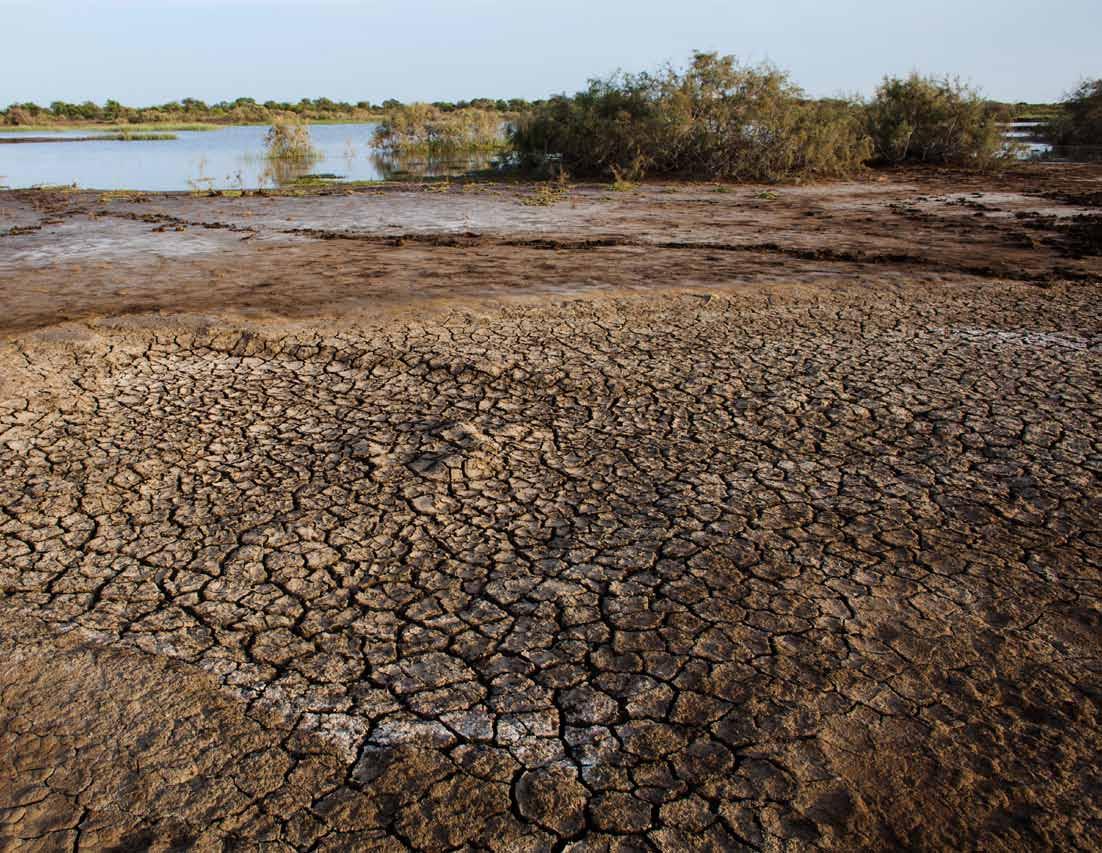
4 minute read
Climate Change: Ground Zero
from Land for Life
By uneP
Robert Ondhowe, United Nations Environmental Programme
Advertisement
Climate change is transforming how society lives and interacts with nature. Its effects are most readily evident and felt in food security, with land resources playing a major role because of the sizeable global population that still relies on rain-fed and subsistence agriculture. Most African economies, unlike much of the rest of the world, largely depend on land-based economic activities, especially agriculture. Thus, land management strategies that can assist farmers in dealing with changing climatic patterns are critical for food security.
Since 1880, the Earth’s average surface temperature has increased by 1.5°F (0.83°C). However, the effect of climate on agriculture is associated more with the variability of local climate than to the global climate patterns. The United Nations Environmental Programme (UNEP), in Livelihood Security: Climate Change, Conflict and Migration (2011), observes that, from 1970 to 2006, changes in the seasonal temperatures in the Sahel region of Africa have risen by a range of between 0.5 to 2.0°C. The impact is such that United Nations Secretary-General’s Special Advisor on Conflict, Jan Egeland, referred to the Sahel region of Africa as the “ground zero” of climate change. Despite technological advances such as improved crop varieties, genetically modified seed and irrigation systems, the weather is still a key factor in Africa’s agricultural productivity, as are its very fragile soil properties and communities.
A study published in Science magazine suggests that, due to climate change, “southern Africa could lose more than 30 percent of its main crop, maize, by 2030. In South Asia, losses of many regional staples, such as rice, millet and maize could top 10 percent.17” Globally, in many rain-fed, nonirrigated areas, crops are already near their maximum temperature tolerance due to rising temperatures. Yields are also likely to fall sharply from even small climate changes. The poorest countries will be hardest hit, with reductions in crop yields in most tropical and subtropical regions caused by decreased water availability and new or changed insect/pest incidences. Experts project a fall in agricultural productivity of up to 30 percent during the 21st century, but the effects of climate change on crops are expected to vary from region to region.
Tanzania’s official report on climate change suggests that the areas that usually get two rainfalls in a year will probably get more, and those that get only one rainy season will get far less. The net result expected is that 33 percent less maize—the country’s staple crop—will be grown. Overall, the average crop yield is expected to drop in areas where there is decreased rainfall, whereas cereal production could actually increase in places of increased rainfall, if managed properly.
For the favorable effects on yield to happen, much will depend on the realization of the potentially beneficial effects of carbon dioxide on crop growth and an increase in efficient water use. Stated differently, while adaptation is linked to efficient water use, the health of the land will matter for resilience, with regard to producing more organic carbon and increasing groundwater recharge.
In the long run, climatic change could affect agriculture in several ways, including:
• productivity, in terms of the quantity and quality of crops;
• agricultural practices, through changes in water use, particularly irrigation, and agricultural inputs, such as herbicides, insecticides, and fertilizers;
• environmental effects, particularly those relating to the frequency and intensity of soil drainage through nitrogen leaching, soil erosion, and reduced crop diversity;
• rural space, through the loss and gain of cultivated lands, land speculation, land renunciation, and hydraulic amenities; and
• adaptation, organisms may become more or less competitive, and humans may develop an urgency to create more competitive organisms, such as flood-resistant or salt-resistant varieties of rice. Most agronomists, the experts in soil management and crop production, believe agricultural production will be affected most by the severity and pace of climate change, not so much the gradual trends in climate.
The projected climate variability and change are expected to severely compromise agricultural production and access to food. With 70 percent of the population still relying on rain-fed agriculture for their livelihoods, Africa’s population dynamic and geography make it particularly vulnerable to climate change. If change is gradual, there may be enough time for the ecosystem, as well as agricultural techniques, to adjust. Rapid climate change, however, could harm agriculture in many countries, especially those that are already suffering from rather poor soil and climate conditions, because there is less time for optimum natural selection and adaption.
Decreases in potential yields are likely to arise from a shortening of the growing period, a decrease in water availability, and poor seed quality.
For scientists and policy making, there are many uncertainties to handle for effective policy design. The uncertainties include the magnitude of climate change, the effects of technological changes on productivity, global food demand, and adaptation possibilities. Worse, related information at the regional level is often lacking. The imperative to accelerate the scaling up and scaling out of efforts to restore degrading land in the drylands and elsewhere to mediate the effects of climate change is therefore urgent. The innovations highlighted in this magazine are part of the solution and offer hope if supported adequately. In the end, it is the agricultural policies in place that will determine how countries are affected. The urgent need for polices to mainstream sustainable land management to minimize climate change effects cannot be overemphasized.











